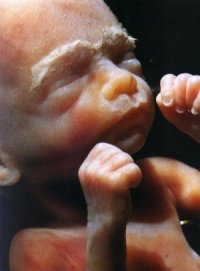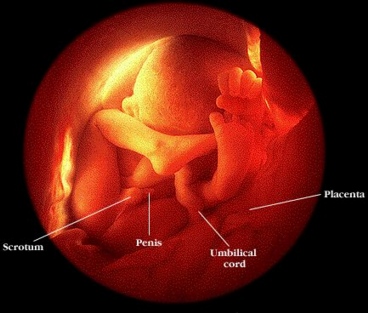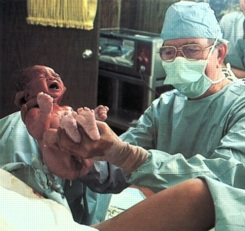|
|
|

|
||

|
24 weeks - Seen here at six months, the unborn child is covered with a fine, downy hair called lanugo. Its tender skin is protected by a waxy substance called vernix. Some of this substance may still be on the child's skin at birth at which time it will be quickly absorbed. The child practices breathing by inhaling amnionic fluid into developing lungs. | |
|
30 weeks - For several months, the umbilical
cord has been the baby's lifeline to the mother. Nourishment is transferred
from the mother's blood, through the placenta, and into the umbilical cord
to the fetus. If the mother ingests any toxic substances, such as drugs
or alcohol, the baby receives
these as well.
32 weeks - The fetus sleeps 90-95% of the day, and sometimes
experiences REM sleep, an indication of dreaming.
|
|
|

|
||

|
40 weeks - The baby, now approximately seven and a half pounds, is ready for life outside its mother's womb. At birth the placenta will detach from the side of the uterus and the umbilical cord will cease working as the child takes his first breaths of air. The child's breathing will trigger changes in the structure of the heart and bypass arteries which will force all blood to now travel through the lungs. | |
|
|
||